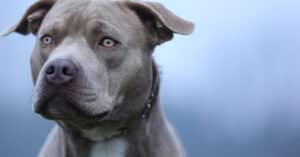The Australian cattle dog is an energetic working breed from Australia. Nearly 200 years ago, in 1825, a cattle baron by the name of Thomas Simpson Hall crossed an imported English herding dog with a dingo, an ancient feral dog native to Australia. Hall continued to make crosses and develop the new breed, known as Hall’s Heelers, until his death. Unfortunately, all his breeding records were lost, so no one knows exactly which breeds Hall crossed to come up with his desired result. We do know that Australian cattle dogs, sometimes called heelers, come in just two base colors: blue and red. Blue heelers may have blue, blue speckled, or blue mottled coats. Red heelers come in red speckled and red mottled coats. Both varieties of Australian cattle dogs can have a variety of different markings, too.
Blue Australian Cattle Dogs
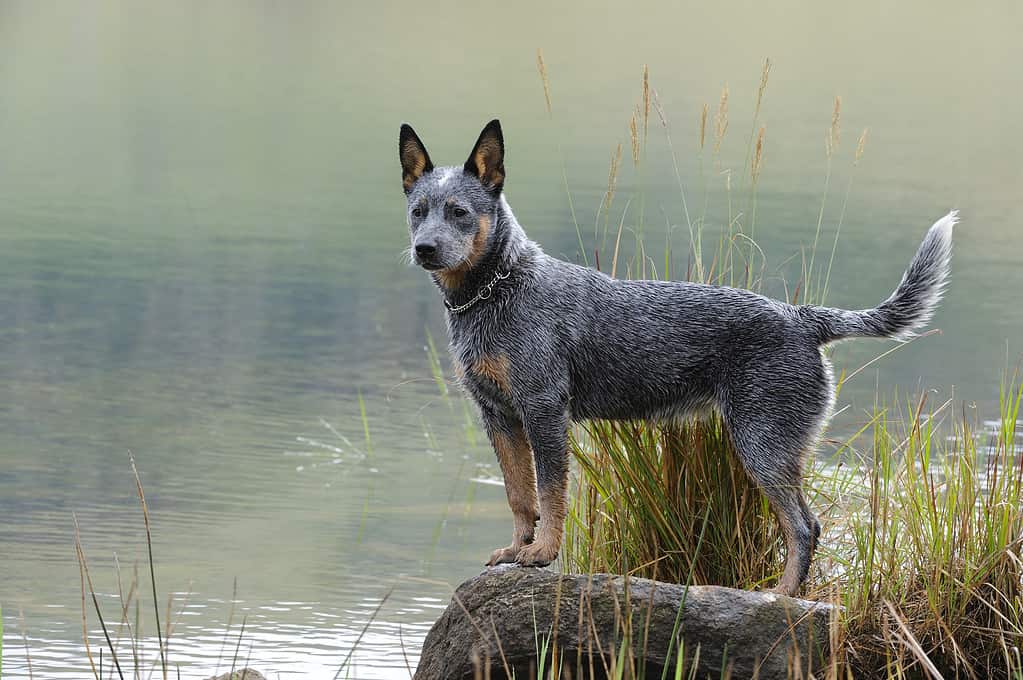
The blue Australian cattle dog has uniformly dispersed, individual white hairs on a black base coat.
©ZE’EV AVNI/ via Getty Images
The blue variety of Australian cattle dogs has a black base coat. They have individual white hairs interspersed among the black hairs of their coat. This gives them an overall “blue” color, which actually looks more like a shade of gray than a true blue. Depending on the number of white hairs the dog has in its coat, it may look light gray or almost black. This coloring helps the dog almost disappear in the darkness. It protects the dog from getting kicked by livestock that might startle at night. Blue cattle dogs have an almost uniform coat, except for markings that we will discuss at the end of this article.
Blue Speckled Australian Cattle Dogs

A speckled blue American cattle dog has relatively small clusters of white hairs on a black base coat.
©Tatyana Consaul/ via Getty Images
Blue speckled Australian cattle dogs also have a black base coat with white hairs throughout. Instead of a uniform dispersion, the hairs on a speckled dog tend to form small clusters. These clusters can be discerned, but they are not nearly as noticeable as the larger clusters found on a mottled dog.
Blue Mottled Australian Cattle Dogs
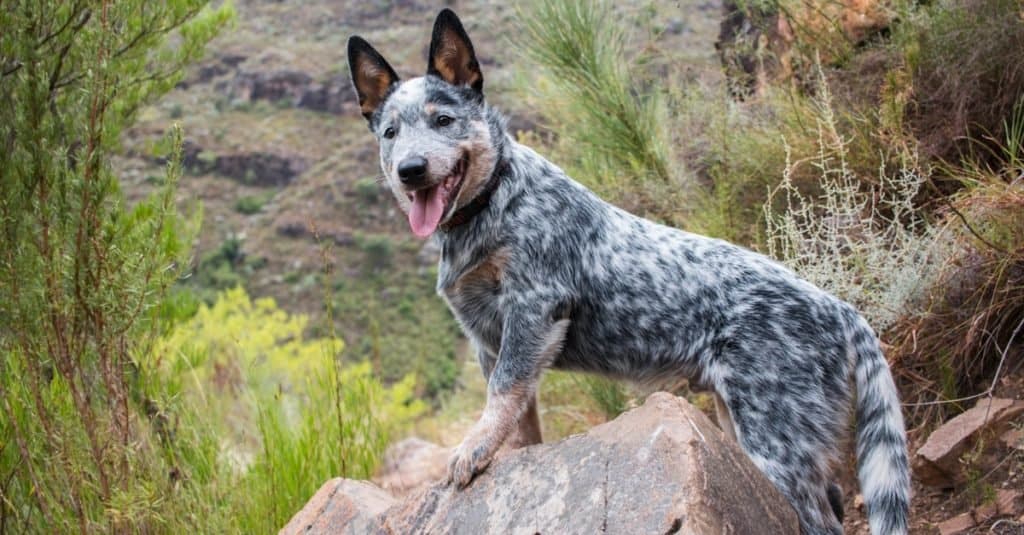
A mottled blue Australian cattle dog has larger white clusters of hair and may look more white than dark.
©Madelein Wolfaardt/Shutterstock.com
The blue mottled Australian cattle dog has the same black base coat as the other blue varieties, but it has larger clusters of white hairs throughout. Observers may find it challenging to differentiate between speckled and mottled Australian cattle dogs. Indeed, there seems to be considerable crossover between the two when the white splotches are small. Some mottled Australian cattle dogs have white clusters of hair large enough that the dogs look a bit more white than black or blue.
Red Speckled Australian Cattle Dogs
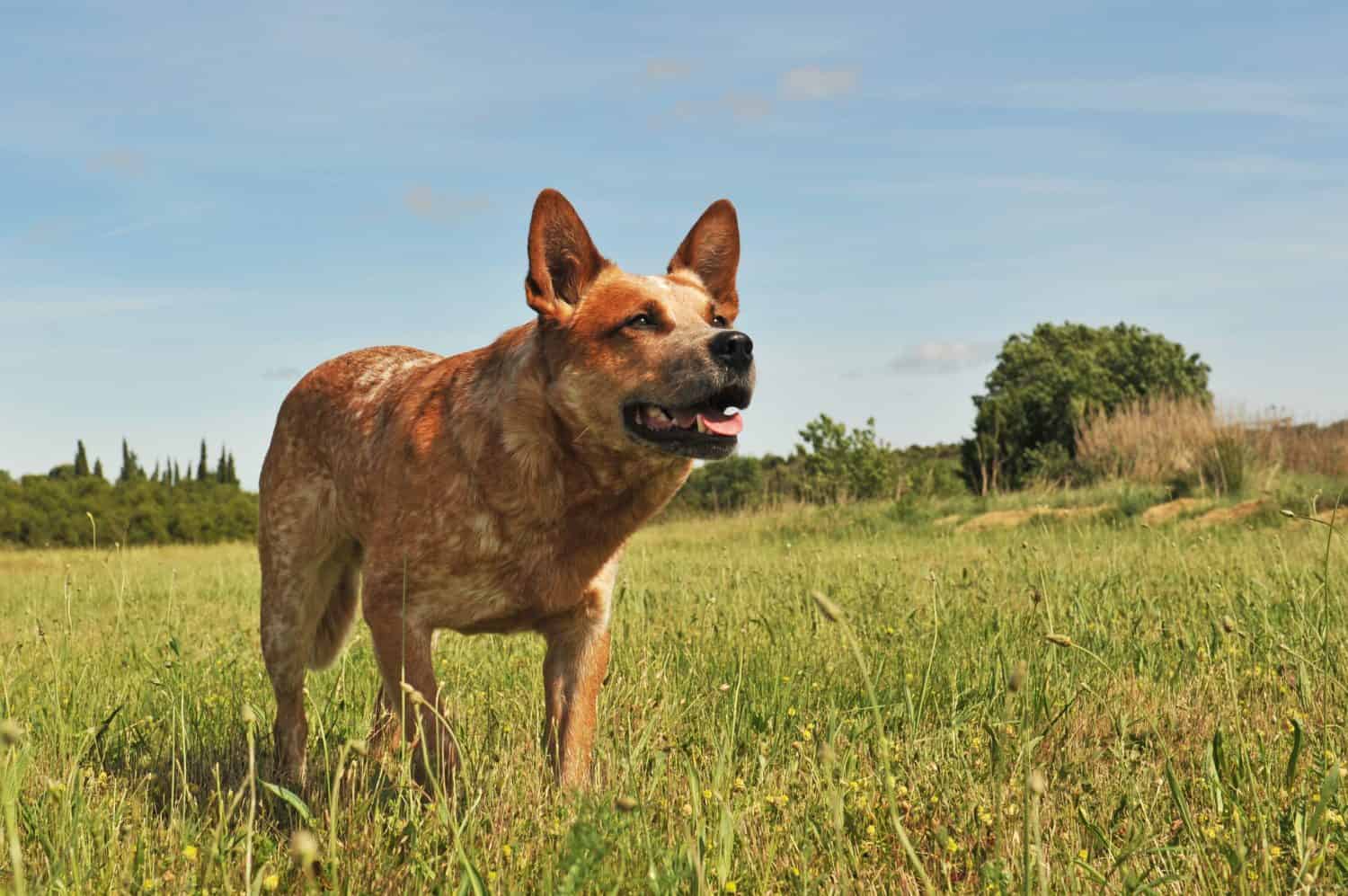
A speckled red Australian cattle dog has small white clusters of hair interspersed with its base color.
©cynoclub/Shutterstock.com
The red speckled Australian cattle dog, like the blue speckled variety, has small white clusters of hairs throughout its coat. Unlike the blue variety, though, the red speckled Australian cattle dog has a reddish-brown base coat. Some people call their base coat fawn or sable. The base color closely resembles that of Australia’s feral dingo, one of the ancestors of this breed. Therefore, an all-over reddish-brown coat with little to no white hair is discouraged among breeders.
Red Mottled Australian Cattle Dogs
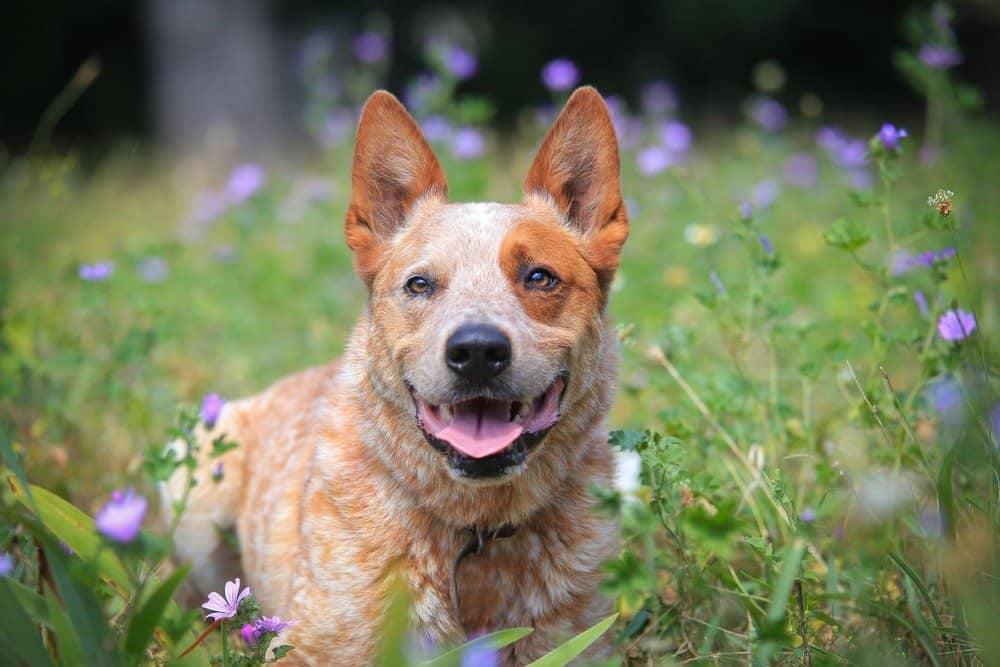
A red mottled Australian cattle dog has larger clusters of white hairs on a reddish brown base coat.
©Melounix/Shutterstock.com
The red mottled Australian cattle dog has larger clusters of white hairs in its coat than the speckled variety. Again, observers may have a difficult time telling these two types apart, especially if they don’t see them side by side. Dogs with larger white clusters and heavier mottling may be much easier to categorize.
Various Markings on Cattle Dogs
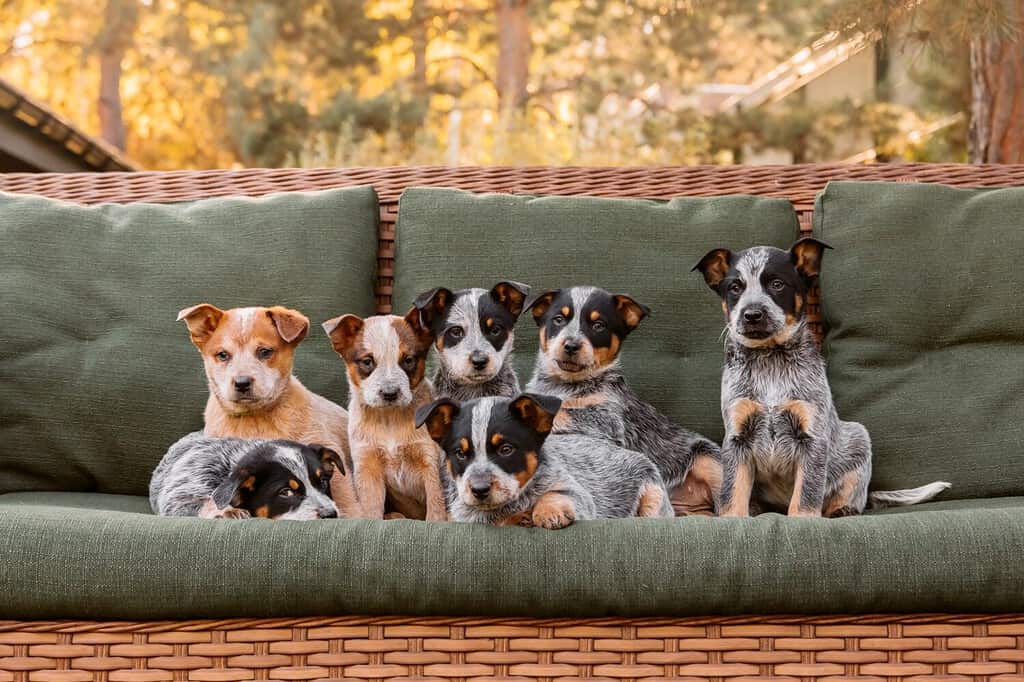
These Australian cattle dog pups show a variety of markings common to the breed.
©OlgaOvcharenko/Shutterstock.com
Both red and blue Australian cattle dogs are born with white coats, and perhaps some darker markings. Their base coat does not come in fully until they reach a few weeks of age. These dogs can then present with a variety of markings. Blue Australian cattle dogs may have solid patches of their black base color. These occur most commonly on one or both sides of their face, often covering one or both eyes, and they may occur elsewhere on their bodies. Red Australian cattle dogs usually have red markings just on their head, on one or both sides, often covering their eyes and sometimes their ears.
Australian cattle dogs can also have tan markings on their lower legs, their chest, and their neck. They may also have tan markings on their cheeks, eyebrows, muzzle, and ears. Under the tail, they may have another large tan patch. The markings on their body can vary in shades of tan and may be solid or splotchy.
Many Australian cattle dogs have a white spot on their forehead called a Bentley mark. This mark was named for a breeder named Thomas Bentley who selectively bred for the trait.
Some of both the blue and the red dogs have ringed tails that resemble those of a raccoon.
The photo featured at the top of this post is © iStock.com/Tatyana Consaul
Ready to discover the top 10 cutest dog breeds in the entire world?
How about the fastest dogs, the largest dogs and those that are -- quite frankly -- just the kindest dogs on the planet? Each day, AZ Animals sends out lists just like this to our thousands of email subscribers. And the best part? It's FREE. Join today by entering your email below.
Thank you for reading! Have some feedback for us? Contact the AZ Animals editorial team.





